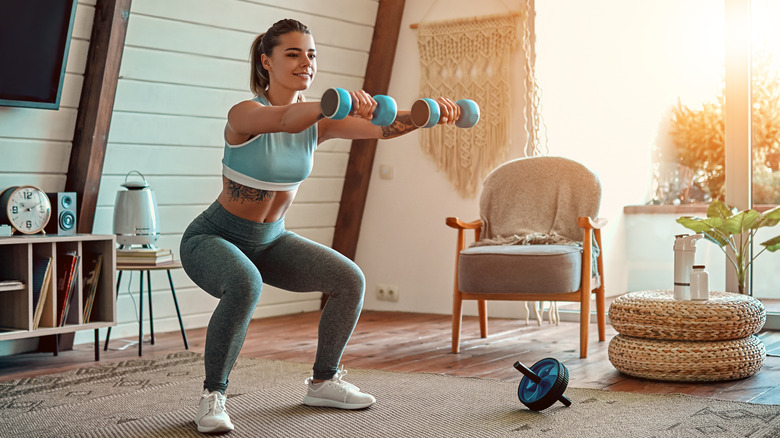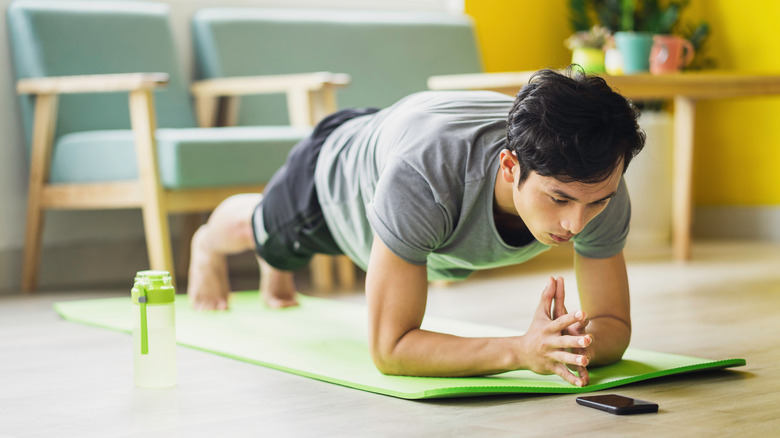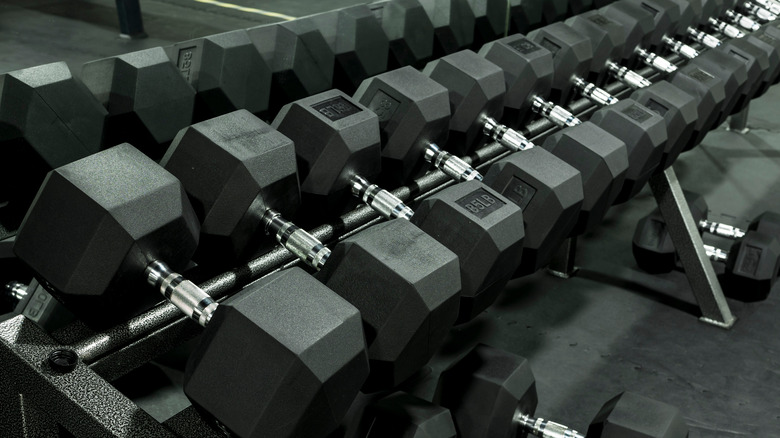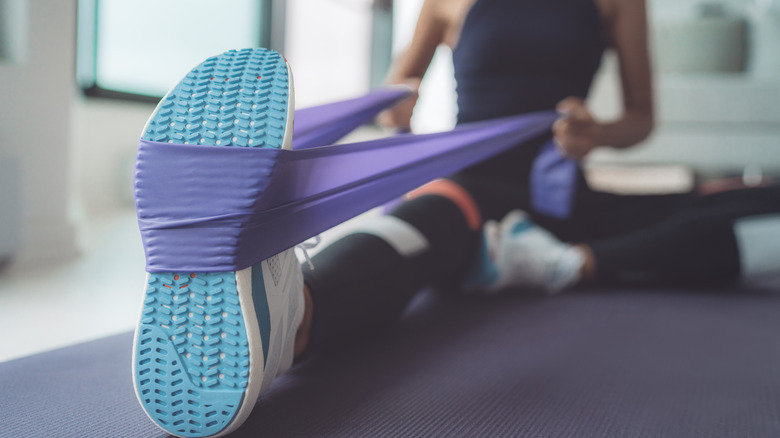How To Turn These Three Spaces Into A Home Gym
Adding a home gym to your property is a great way to tackle the exercise goals that you hold for yourself while reducing the expense and travel time to a local gym, which often acts as a barrier for many homeowners.
Building a gym at home is a great alternative to purchasing a monthly gym membership. For one thing, gyms are often crowded, meaning the machine or bench that you want won't always be available when you want to use it. Likewise, with a large, crowded gym floor comes the potential for judgmental glances. Healthline reports that gym anxiety is a natural feeling that anyone can experience, but this knowledge won't always help when it's time for you to walk into the weight room for a session.
The use of a home gym provides a judgment-free area to work out at your own pace, and without the need to share equipment with a constant cycle of strangers. Strong Home Gym estimates the cost of typical essentials (a barbell, weights, bench, and squat rack) for a home gym at just over $900. Power Lifting Technique recommends the inclusion of resistance bands, a jump rope, and even a plyometrics box to take your workouts up a notch without an overwhelming expense. A home gym can provide the foundation for your fitness goals, and installing the setup in one of these three rooms can get you there in no time.
A spare bedroom is a great location for new gym equipment
Converting a spare bedroom into your new home gym is a great option for homeowners. With a child leaving the nest, a change in work circumstances that removes the need for a home office, or any other life change that frees up a room in the home, it can be a challenge to decide how to best make use of the space. A home gym is perhaps one of the best options that you can bring to the property. Strong Home Gym estimates that over a 10-year period, a home gym will cost you about $3,200, while the typical gym membership will total an expense of $6,960 (and CrossFit costs even more, at $18,000 over this timeframe).
A typical bedroom is large enough to support the workout needs of a single lifter or a pair of workout partners with ease. Power Lifting Technique estimates that an ideal home gym will measure out to about 150 to 250 square feet, with a minimum size of 50 to 60 square feet to support the essentials. Fortunately, the average bedroom is about 200 square feet (via Homedit). In a bedroom conversion, adding rubber mats (via Men's Health) is particularly important so that you can protect the integrity of the floor for future uses.
The basement can act as the perfect home gym for an avid lifter
Another key resource that homeowners can take advantage of when seeking to incorporate a new home gym into their property is the basement. Basements provide a semi-soundproofed environment that's perfect for a motivational soundtrack and all the loud vocalizations that help a lifter accomplish their weight goals.
Transforming an underutilized basement into a home gym is a fantastic option that provides the floor space required without sacrificing needed space within the main home. Your Own Architect notes that a sizeable portion of U.S. homes that have basements included in the floorplan sport an unfinished style. These spaces, perhaps as a result of this reality, are often used for simple storage tasks or laundry room amenities, but little else.
Adding a layer of essential floor mats to the basement and bringing in weight racks and structures can give you a whole new purpose in this forgotten corner of the home. Strong Home Gym reports that a home gym can help you develop a more family-friendly lifting routine by eliminating the long commute to the gym. Adding this feature to a basement that isn't seeing any other primary use is a no-brainer for those seeking a transformation that provides much-needed family time to their typical daily routine.
Consider the garage for more room
Your garage might offer the best fit for a home exercise space as it incorporates excellent ambiance, a large footprint, and the ability to customize the included equipment to your unique needs. Strong Home Gym recommends the addition of four key essentials to make a gym serviceable for all types of lifting requirements: A squat rack, barbell weight bench, weight plates, and the barbell itself. With these four ingredients, you can tackle a versatile workload that targets both large and small muscle groups alike. You can bring in other exercise machines and materials as well for those much-needed cardio days.
Additionally, the garage is typically much larger than a spare bedroom, and in the United States, 25% of homeowners that enjoy a two-car garage don't use this part of the home to park a car (via Garage Living). Often, the garage collects clutter and acts as a primary storage vessel for belongings, both useful and irrelevant.
A unique benefit that the garage provides as a gym environment is the ability to vent the space in a way that no other area of the home can. By opening the garage door, you invite a waft of fresh air that can give the gym an outdoorsy feel. A garage gym also offers the ability to quickly add newly delivered equipment without having to cart it through the home to a final destination inside the property.



